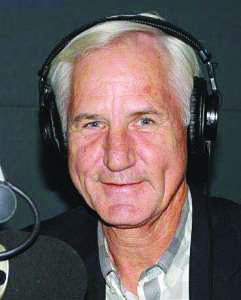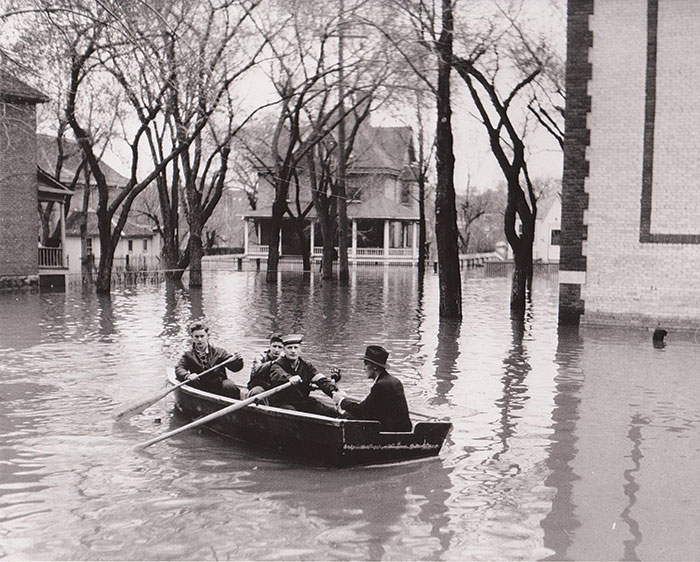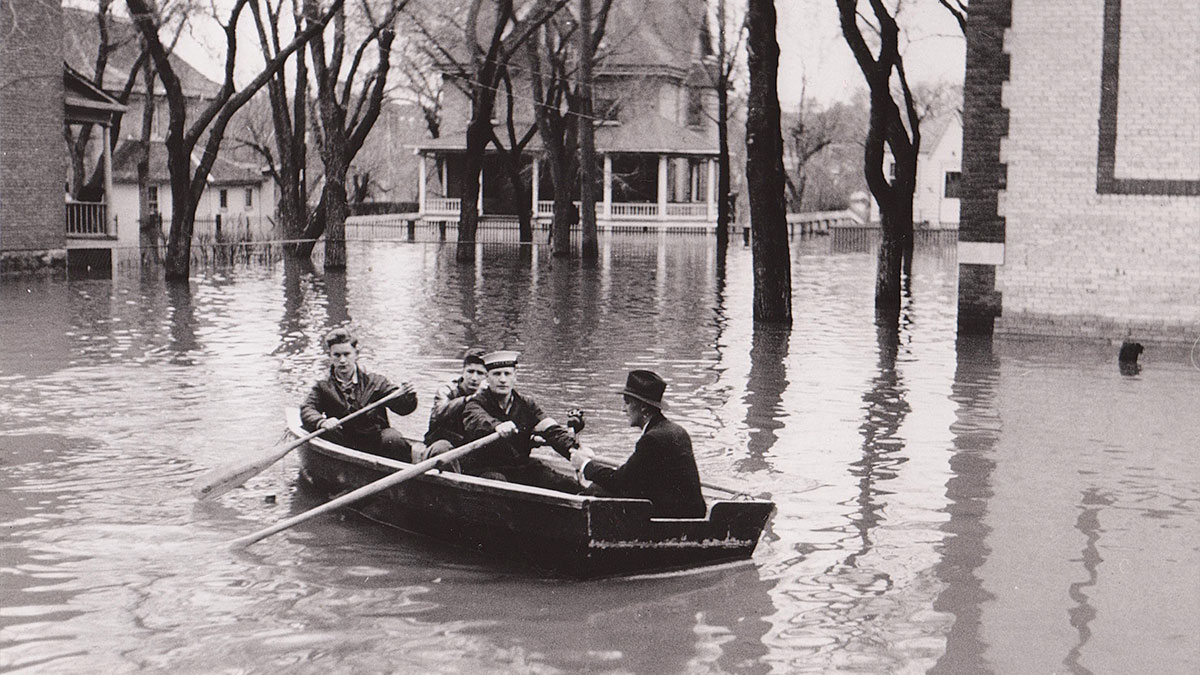Garry Moir
2022 marks the 100th anniversary of radio broadcasting in Manitoba. Over the course of the year, Lifestyles 55 will be publishing a series of articles featuring a few of
the highlights of local radio history.

“I am so tired, I can hardly talk. I just came from radio station CKRC’s transmitter. My two assistants and I were marooned out there for nine days by the Red River flood. We’d been trying to protect the transmitter and the building, but the flood was too much for us.”
Those words were written by Bert Hooper, chief engineer at CKRC radio, at the height of the 1950 Manitoba flood.
Despite his exhaustion, Hooper was not about to be beaten by the rising waters.
A man of ingenuity, he soon had a make-shift tower and transmitter perched atop the Free Press building on Carlton Street and CKRC was operational once again. Hooper, along with his counterparts from other radio stations, worked many a miracle during the flood in keeping their respective broadcasting operations on the air. Transmitters from every local station fell victim to the flood at one time or another.

Never were broadcast engineers more vital. Never was radio more important than during that dark spring of 1950.
Television and the internet did not exist. The telephone service was overloaded, or in some cases, washed out. Radio was the only immediate source of flood information. Brigadier R.E.A. Morton, who had been appointed by the Provincial Government to head the flood fight, urged Manitobans to keep their radios on “constantly”.
Radio served many functions during the flood. Stations went on the air 24 hours a day. Regular programming was cast aside and, in some instances, valuable advertising time surrendered.
Updates from flood fighting officials were broadcast live. Sandbaggers were directed to where they were needed most. Residents facing evacuation were told where and when to go to catch train rides out of the city. Radio informed volunteers where food could be picked up and transported. Stations also received hundreds of telephone calls about people who had been separated by the flood waters. Names would be broadcast to try to bring people together.
The role of radio was best summed up in a newspaper advertisement put out by station CJOB. It simply read, “Call us, anytime for anything. If we can, we will help.” The same could be said for all Manitoba broadcasters.
For some staffers like Bert Hooper, the flood left images that would last a lifetime.
“I never saw such desolation. We saw cows and horses in barns with their heads just above water. Some houses were right off their foundation, toppled over. I think, though, the worst was an old man near the station. He was living in his loft…no stock, no nothing. But he wasn’t leaving. He said, ‘This is all I’ve got’.”
When the flood waters finally receded, the massive clean up began. Property damage was immense in the Red River Valley and the City of Winnipeg. In some cases, livelihoods had been lost. To co-ordinate relief efforts, the provincial government established the Manitoba Flood Relief Fund.
Again, it was radio that played a key role in getting the message out. On May 14, 70 radio stations in Canada broadcast a 20-minute segment from Winnipeg describing the flood, its impact and the need for financial help.
In Toronto, two former Winnipeg radio employees convinced the owner of Maple Leaf Gardens to host a fundraising event for Manitoba. The gala featured a who’s who of the Canadian entertainment industry, including many former Manitobans who had headed east to pursue their careers, among them actress Beth Lockerbie, tenor George Murray and broadcaster Jack Dennett. The Toronto Symphony Orchestra put in an appearance, as did the Leslie Bell Singers. Hosting the event were two former Manitobans: musician and singer Giselle Mackenzie, who had grown up in St. Boniface, and movie star Jack Carson who had started life in Carman. Both flew in from New York.
Every radio station in every province broadcast the flood relief concert. It was also picked up by several American networks and portions of the program were also heard on the BBC. In total, the broadcast aired on 729 radio stations in Canada, the United States and Great Britain.
In the week following the broadcast, the Manitoba Flood Relief Fund grew by over a million dollars.
The 1950 flood truly was radio’s finest hour.
Garry Moir has spent more than 50 years in the broadcasting industry. He has written extensively about local radio history including a book titled “On The Air: The Golden Age of Manitoba Radio.” He currently produces the daily “History Vault” feature on CJNU radio.

